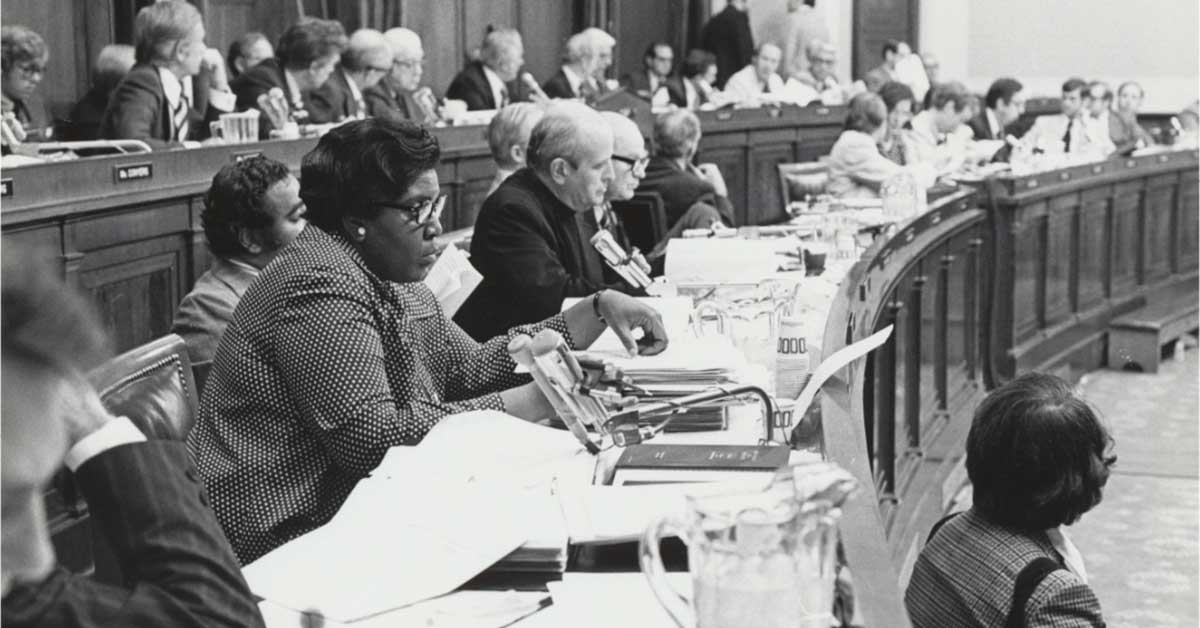
JULY 12, 1976

U.S. Rep. Barbara Jordan, who first came to the forefront in the Watergate hearings, became the first African-American woman to deliver the keynote address to the Democratic National Convention.
In high school, she heard a career day speech by Edith Sampson, a black lawyer. Sampson’s words inspired her to become an attorney, and she attended Texas Southern University, a black college hastily created by the Texas Legislature to avoid having to integrate the University of Texas. While there, she became part of the debate team, which famously tied Harvard University debaters.
After graduating magna cum laude in 1956, she was accepted at Boston University’s law school. After graduating, she returned to Houston to open a law office in the Fifth Ward. In 1972, she became the first black woman from the South to be elected to Congress. Four years later, she told those at the Democratic National Convention, “We are a people in a quandary about the present. We are a people in search of our future. We are a people in search of a national community. We are a people trying not only to solve the problems of the present, unemployment, inflation, but we are attempting on a larger scale to fulfill the promise of America. We are attempting to fulfill our national purpose, to create and sustain a society in which all of us are equal. …
“Many fear the future. Many are distrustful of their leaders and believe that their voices are never heard. Many seek only to satisfy their private work — wants; to satisfy their private interests. But this is the great danger America faces — that we will cease to be one nation and become instead a collection of interest groups: city against suburb, region against region, individual against individual; each seeking to satisfy private wants. If that happens, who then will speak for America? Who then will speak for the common good? …
“We cannot improve on the system of government handed down to us by the founders of the Republic. There is no way to improve upon that. But what we can do is to find new ways to implement that system and realize our destiny.”
Her own destiny had been impacted a few years earlier when she was diagnosed with the debilitating disease of multiple sclerosis. In 1979, she stepped away from politics and began teaching at the University of Texas. She delivered the keynote address again in 1992, this time from a wheelchair. Not long after, she received the Presidential Medal of Freedom, and in 1996, she died of pneumonia and leukemia. The University of Texas and Austin airport have both honored her with statues.

